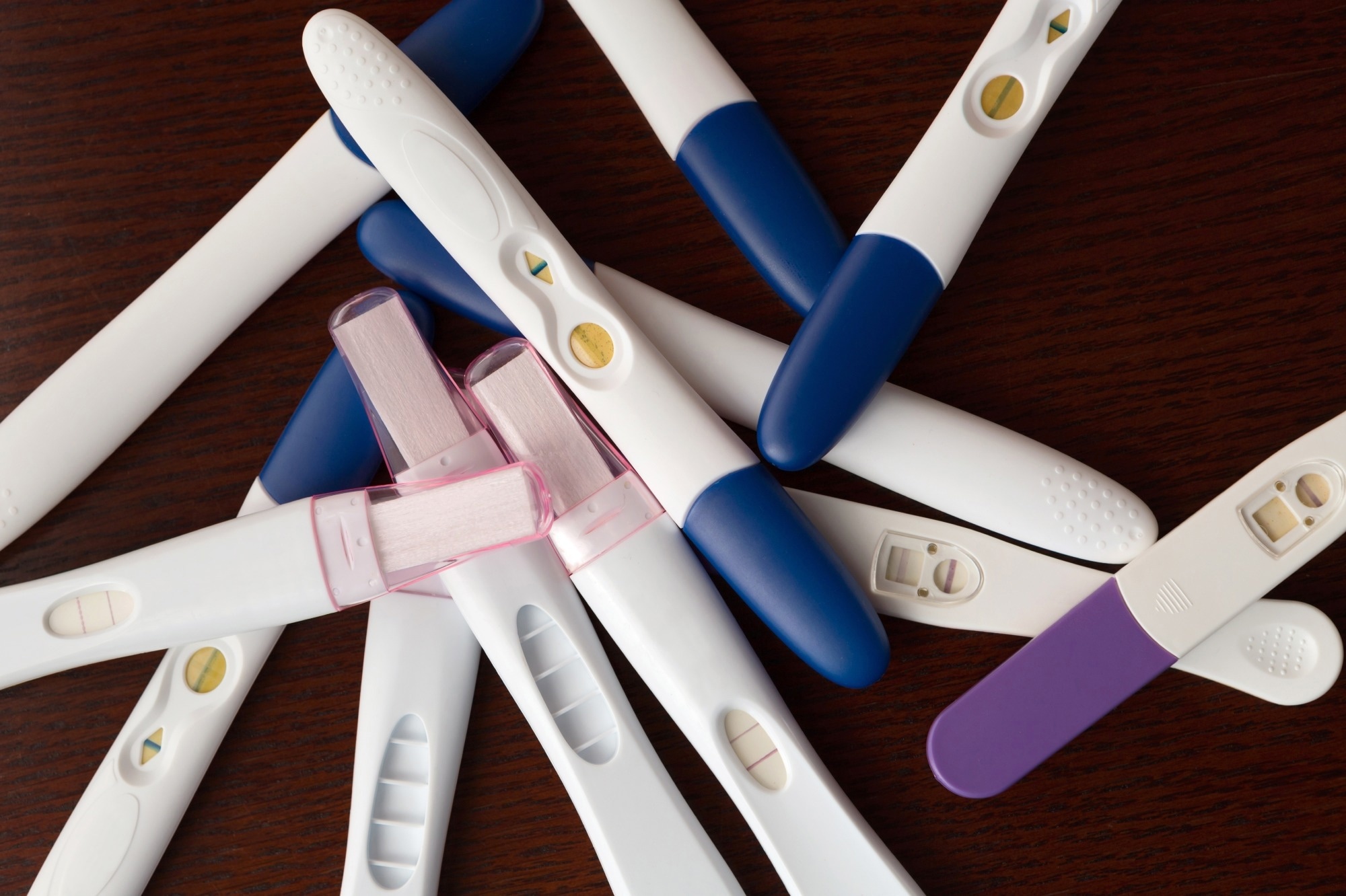In a recent study published in the journal Environmental Health Perspectives, researchers assess the relationship of preconception phthalate exposure with fecundability, pregnancy loss, and biomarkers of inflammation, hormone disruption, and oxidative stress.
 Study: Preconception Phthalate Exposure and Women’s Reproductive Health: Pregnancy, Pregnancy Loss, and Underlying Mechanisms. Image Credit: Dream Perfection / Shutterstock.com
Study: Preconception Phthalate Exposure and Women’s Reproductive Health: Pregnancy, Pregnancy Loss, and Underlying Mechanisms. Image Credit: Dream Perfection / Shutterstock.com
What are phthalates?
Phthalates are commonly used as stabilizers in personal care products and plasticizers in polyvinyl chloride. Sources of phthalate exposure include inhalation or ingestion due to leaching from household products and food packaging, dermal absorption from personal care products, and water contamination.
Phthalates act as endocrine disruptors and can systemically elevate oxidative stress and inflammation. Phthalate exposure is associated with adverse health outcomes, including chronic kidney disease, preterm birth, and poor neurodevelopment.
Reproductive toxicity is of particular concern with phthalate exposure, given the sensitivity of reproductive processes to oxidative stress and endocrine disruption. Furthermore, various phthalates are associated with anti-androgenic properties, with several studies suggesting that phthalate exposure in males can reduce testosterone and semen quality.
Phthalate exposure during pregnancy has also been associated with pregnancy loss and preterm birth. However, studies on the impact of phthalate exposure on achieving or sustaining a healthy pregnancy have produced inconsistent findings.
About the study
In the present study, researchers collected data from the Effects of Aspirin in Gestation and Reproduction (EAGeR) trial, during which females attempting pregnancy were recruited between 2007 and 2011.
Trial participants were randomized to receive 81 mg of aspirin and 400 µg of folic acid or placebo and folic acid at the start of the first observed menstrual cycle. All study participants were monitored for up to six menstrual cycles and throughout pregnancy if they became pregnant.
Eligible individuals were between 18 and 40 years of age, had regular menstrual cycles and one or two previous pregnancy losses, had no history of infertility, contraindications for aspirin, or indications for anti-coagulant treatment, and were not treated for a medical problem.
Participants self-reported data on age, ethnicity/race, parity, smoking, and medical history. Blood and first-morning urine samples were also collected.
Twenty phthalate metabolites were evaluated in urine samples. Pregnancy was detected through human chorionic gonadotropin (hCG) levels. Pregnancy loss was determined as the absence of confirmation of pregnancy on ultrasound after a positive hCG or as an observed loss after clinical confirmation.
Fecundability was assessed as the number of menstrual cycles of follow-up a couple attempted to achieve pregnancy. Creatinine and reproductive hormones were measured in samples collected at different time points, including during the follicular, ovulation, and luteal phases. High-sensitivity C-reactive protein (hsCRP) in serum and isoprostanes in first-morning urine samples were measured at enrollment.
Cox proportional hazard models were used to determine the association between phthalate metabolites and fecundability. Weighted Poisson models with robust variance were used to assess the risk of pregnancy loss. Generalized linear models were used to evaluate the associations of phthalate metabolites with changes in reproductive hormones, isoprostanes, and hsCRP.
Study findings
The EAGeR trial enrolled 1,228 females with an average age of about 29. About 95% of participants were non-Hispanic White, 68.9% had a moderate-to-high income, 57.2% were parous, and 12.3% reported smoking.
Overall, 797 participants became pregnant, 188 of whom experienced pregnancy loss. Preconception levels of multiple phthalate metabolites were associated with a reduced likelihood of fecundability.
There were no clear associations between phthalate metabolites and pregnancy loss risk. The effect estimates for pregnancy loss, or fecundability were not different by randomization to aspirin or placebo. Furthermore, preconception phthalate metabolites were associated with numerous reproductive hormones during the first two menstrual cycles of follow-up.
Increased concentrations of several metabolites were associated with reduced estradiol throughout the menstrual cycle. Moreover, increased levels were consistently associated with higher levels of luteinizing hormone (LH) and follicle-stimulating hormone (FSH), especially at ovulation. Associations with progesterone were less consistent.
Preconception levels of phthalate metabolites were associated with increased levels of isoprostanes and hsCRP. The three metabolites of mono-benzyl phthalate, mono-butyl phthalate, and mono-(2-ethyl hexyl) phthalate with the strongest association with fecundability were consistently associated with increased isoprostane and hsCRP concentrations.
Conclusions
Higher preconception levels of phthalate metabolites were associated with reduced fecundability and estradiol levels, as well as increased LH and FSH levels during ovulation. Additionally, there was no clear association between phthalate metabolites and the risk of pregnancy loss.
Various phthalate metabolites were associated with reduced fecundability, changes in reproductive hormones, and increased oxidative stress and inflammation. The study findings suggest that preconception phthalate exposure may impair female reproductive health and that pre- and periconceptional periods may represent a sensitive window for interventions to limit the reproductive toxicity of phthalate exposure.
Journal reference:
- Nobles, C. J., Mendola, P., Kim, K., et al. (2023). Preconception Phthalate Exposure and Women’s Reproductive Health: Pregnancy, Pregnancy Loss, and Underlying Mechanisms. Environmental Health Perspectives. doi:10.1289/EHP12287